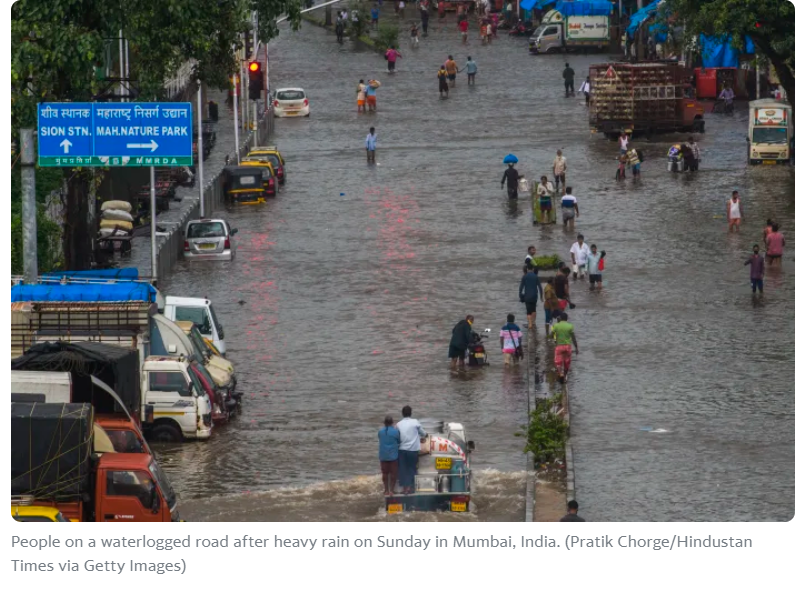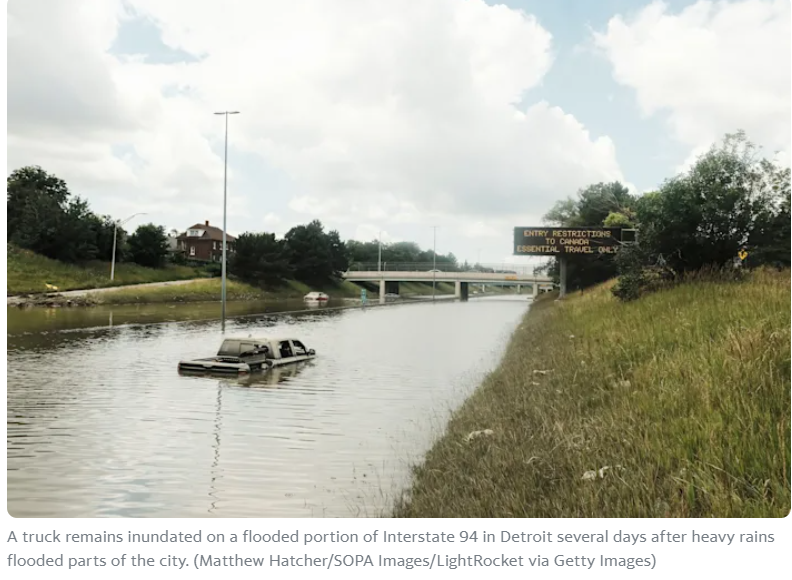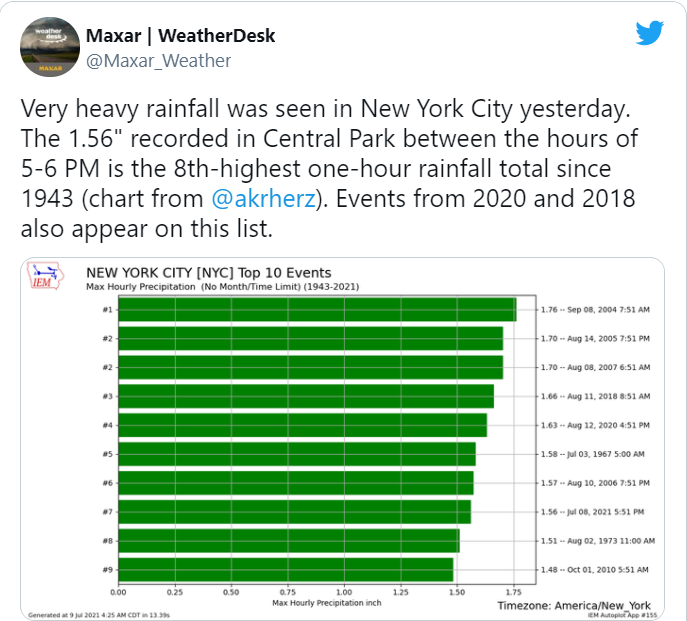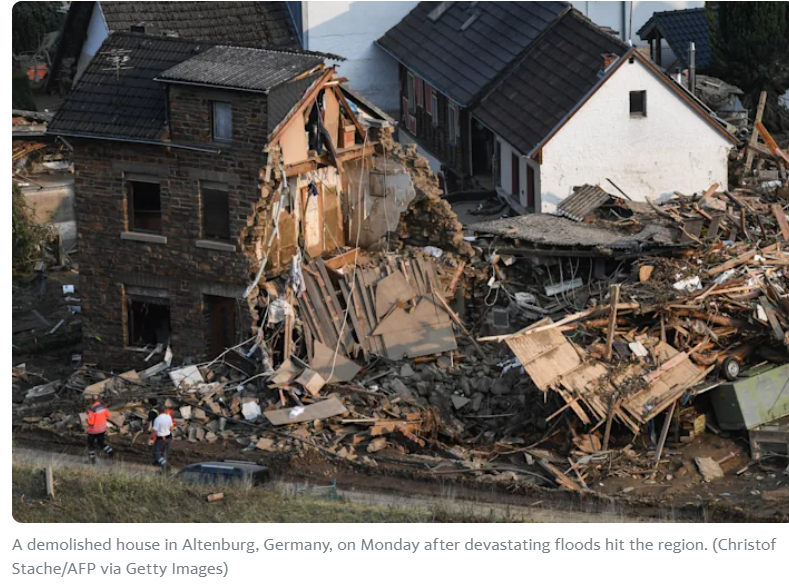Thanks to climate change, the Earth’s atmosphere now holds more moisture than in decades past, which is, in part, leading to more frequent extreme rainfall events, experts say.
The last few weeks alone have provided ample evidence to back up that assertion.
Up to 7 inches of rain fell on parts of Germany over a 12-hour period last week, the equivalent of two months’ worth for the region. The downpour resulted in severe flooding that left nearly 200 dead, more than 700 injured and more than 1,000 people still missing in Germany and surrounding nations.
“Climate change has arrived in Germany,” said Svenja Schulze, the country’s environmental minister.
While touring areas ravaged by the flooding on Sunday, German Chancellor Angela Merkel said, “We have to get faster in the fight against climate change.
“The sum of all events that we are witnessing in Germany and the forces with which they occur all suggest … that it has something to do with climate change,” she told residents affected by the floods.
The Mumbai international airport reported more than 9 inches of rain in 24 hours early Sunday. Of that total, close to 8 inches fell in just six hours. More than 30 people were killed across the city of 12 million because of the flooding caused by the monsoon rainfall burst.
“We have been talking about climate change and it is happening,” Aaditya Thackeray, a state environment minister in India, said of the rainfall.
A June 26 storm in Detroit unloaded 6 inches of rain over a five-hour period, leaving much of the city and its surroundings underwater. Motorists were stranded on flooded roads, and homes were inundated.
Michigan Gov. Gretchen Whitmer said the flooding showed it was time to “address climate change” by “building resilient infrastructure that will keep us safe and keep our economy going.”

As the Earth’s average surface temperatures continue to rise, so does the amount of moisture being held in the atmosphere, studies have shown. For every 1.8 degrees Fahrenheit of warming, the atmosphere can hold 7 percent more moisture. Since preindustrial times, the Earth has warmed by roughly 2 degrees.
The excess moisture is not the only factor, however, behind the extreme rainfall events. While India experiences heavy rains annually during the monsoon season, climate scientists have for years warned that extreme precipitation events have been on the rise thanks to the shifting weather patterns being caused by rising temperatures. In 2019, for example, more than 1,200 people were killed and millions were displaced from flooding born of especially fierce rains.
A new study published in Geophysical Research Letters found that climate change is often causing weather systems to move much slower, potentially leading to more severe downpours.
“We think these storms in general will become slower moving in summer and autumn because of Arctic amplification,” Hayley Fowler, a hydro climatologist at Newcastle University and one of the study’s authors, told National Geographic.

Thanks to the rapid warming underway in Antarctica and the Arctic, where temperatures are rising faster than the rest of the planet, the jet stream is being destabilized. As a result, traditional weather patterns have been altered. That jet stream disruption, scientists believe, is also a factor that has exacerbated the extreme drought conditions across the American West.
Further east, flash flood warnings were issued over the weekend across a portion of the U.S. that spanned from Cincinnati to Boston, an area where 55 million people live. Portions of the Northeast have been five times wetter this year than the average July, and scenes of flooding posted to social media sites have become commonplace.
On July 8, more than an inch of rain fell in a single hour in New York City, inundating some subway stops and submerging some roadways. The deluge ranked as one of the 10 most intense cloudbursts in the last 80 years.

As has been witnessed in Germany, Detroit, Mumbai and other places this year, inundating rains can quickly overtake infrastructure built for an age before climate change had begun to announce itself so loudly.
In historic terms, the most rainfall ever recorded in a 24-hour period in the U.S. occurred in 2017, when Hurricane Harvey unloaded 42 inches of rain. The storm, which parked itself over Texas and Louisiana for four days, eventually dumping more than 60 inches of rain, is believed to have stalled out due to worsening jet stream fluctuations.
A number of studies have also linked that record-setting rainfall event to — what else — climate change.
Article Credit: news.yahoo
